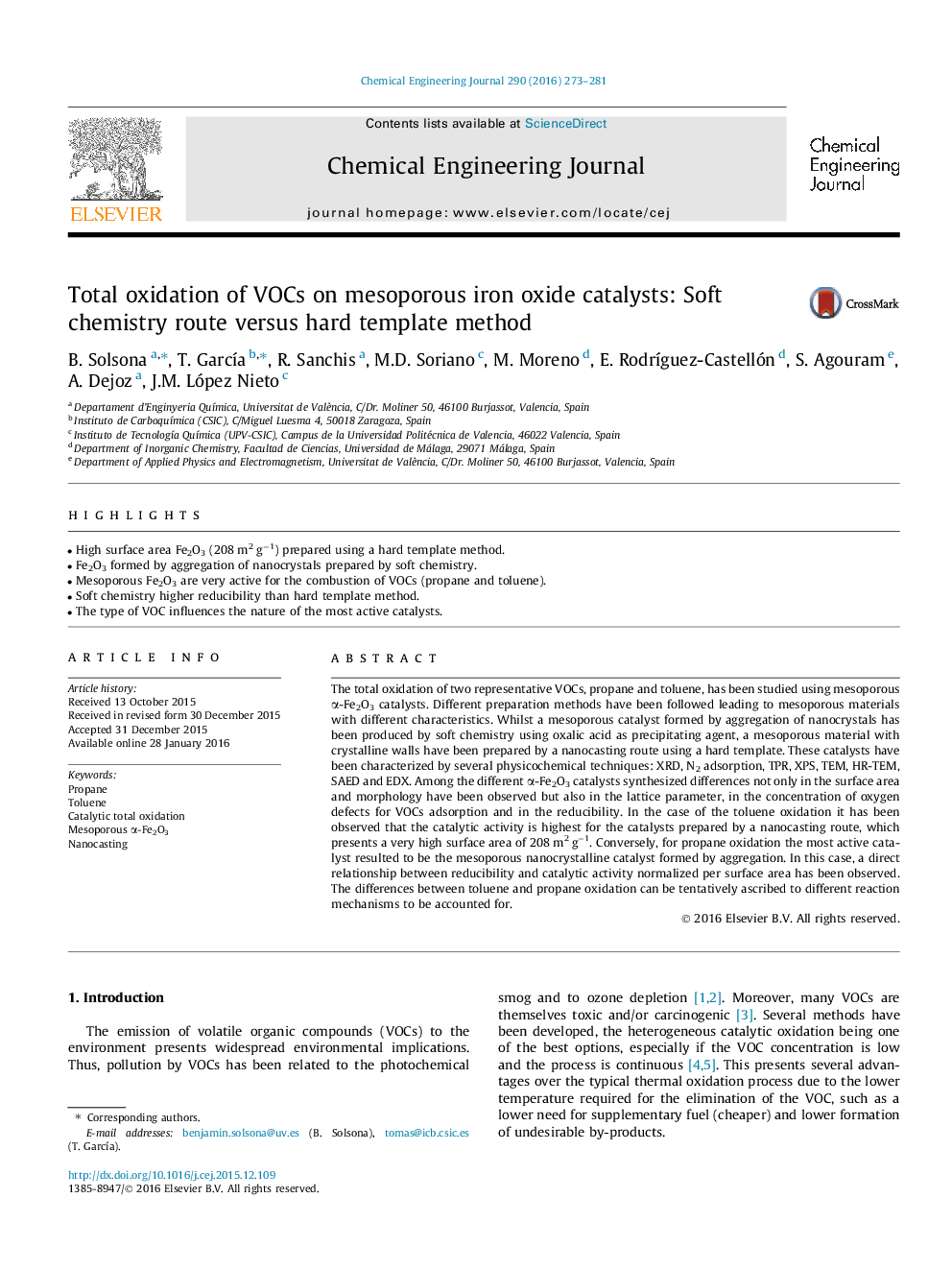| کد مقاله | کد نشریه | سال انتشار | مقاله انگلیسی | نسخه تمام متن |
|---|---|---|---|---|
| 145763 | 456351 | 2016 | 9 صفحه PDF | دانلود رایگان |

• High surface area Fe2O3 (208 m2 g−1) prepared using a hard template method.
• Fe2O3 formed by aggregation of nanocrystals prepared by soft chemistry.
• Mesoporous Fe2O3 are very active for the combustion of VOCs (propane and toluene).
• Soft chemistry higher reducibility than hard template method.
• The type of VOC influences the nature of the most active catalysts.
The total oxidation of two representative VOCs, propane and toluene, has been studied using mesoporous α-Fe2O3 catalysts. Different preparation methods have been followed leading to mesoporous materials with different characteristics. Whilst a mesoporous catalyst formed by aggregation of nanocrystals has been produced by soft chemistry using oxalic acid as precipitating agent, a mesoporous material with crystalline walls have been prepared by a nanocasting route using a hard template. These catalysts have been characterized by several physicochemical techniques: XRD, N2 adsorption, TPR, XPS, TEM, HR-TEM, SAED and EDX. Among the different α-Fe2O3 catalysts synthesized differences not only in the surface area and morphology have been observed but also in the lattice parameter, in the concentration of oxygen defects for VOCs adsorption and in the reducibility. In the case of the toluene oxidation it has been observed that the catalytic activity is highest for the catalysts prepared by a nanocasting route, which presents a very high surface area of 208 m2 g−1. Conversely, for propane oxidation the most active catalyst resulted to be the mesoporous nanocrystalline catalyst formed by aggregation. In this case, a direct relationship between reducibility and catalytic activity normalized per surface area has been observed. The differences between toluene and propane oxidation can be tentatively ascribed to different reaction mechanisms to be accounted for.
Journal: Chemical Engineering Journal - Volume 290, 15 April 2016, Pages 273–281